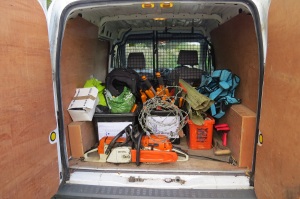An adult white-letter hairstreak was identified in the reserve in 2017 by an expert observer. This is a real rarity, a UK Biodiversity Action Plan priority species, a feather in our caps and the impetus behind our drive to plant disease resistant elms.
The white letter hairstreak butterfly’s life cycle depends entirely on elm trees. The species overwinters as a minute fully formed caterpillar inside its tiny egg case attached either to or near the leaf bud right at the end of an elm twig. The caterpillar, when it emerges in the spring, feeds exclusively on new elm leaves and flowers.
Dutch elm disease arrived in Britain in the 1960s and killed 60 million of our elm trees in two separate outbreaks. This loss reduced the population of white letter hairstreaks by a terrifying 93%; there was a time when it was thought that we would lose both species, tree and butterfly, entirely.
There are elms in the reserve, some of them quite well grown by now and maybe even with some resistance to the disease. Now we know that we have white letter hairstreak butterflies as well, we have planted specially developed disease resistant elms to increase the chances of this rare butterfly’s survival.

1 
2
1. White letter hairstreak egg; 2. Caterpillar 3. (below) adult
The adult butterfly is small and elusive, and spends most of its life high in the elm trees, feeding on honeydew. It will come down to ground level to feed on nectar later in the season and the specimen that was seen in the reserve was spotted feeding on ragwort near the elm trees in the hedge between Sheep Field and Sleepers.
White letter hairstreaks form colonies, which are sometimes made up by only a few dozen individuals. Such a colony typically focuses on a small clump of trees or even on an individual tree. The butterflies will reuse the same site year after year. So we can hope that, high in our elm trees, there is a thriving colony of one of Britain’s rarest butterflies.

3
- Butterfly Conservation priority: High;
- Section 41 species of principal importance under the 2006 NERC Act in England;
- UK BAP status: Priority Species
- Protected under Schedule 5 of the 1981 Wildlife and Countryside Act
None of these photographs was taken in the reserve. The header picture is by AJC1 [(CC BY-SA 2.0) flickr.com]; the others are attributed in the gallery viewer.
Another of our UK BAP priority species:





